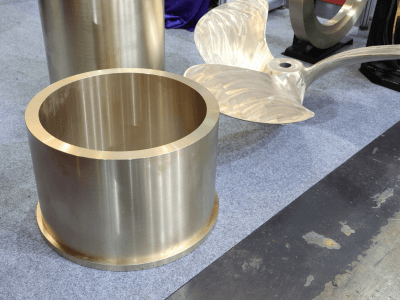Brass Casting
- Home
- Brass Casting
Brass Casting
Brass Casting
Brass casting is a manufacturing process that utilizes the unique properties of brass, a copper-zinc alloy. This alloy is known for its distinctive gold-like appearance, corrosion resistance, and ease of machining. Brass casting is commonly used to create intricate and aesthetically pleasing components for a variety of applications.
Key Features of Brass Casting:
Aesthetic Appeal:
- Brass has a warm, golden appearance that makes it a popular choice for decorative and ornamental castings.
Corrosion Resistance:
- The combination of copper and zinc in brass provides inherent corrosion resistance, making it suitable for applications exposed to the elements.
Machinability:
- Brass is highly machinable, allowing for the production of intricate details and complex shapes with ease.
Low Friction:
- Brass has low friction properties, making it suitable for applications where lubrication is limited or challenging.
Electrical Conductivity:
- Brass exhibits good electrical conductivity, making it suitable for electrical and electronic components.
Key Features of Brass Casting:
Aesthetic Appeal:
- Brass has a warm, golden appearance that makes it a popular choice for decorative and ornamental castings.
Corrosion Resistance:
- The combination of copper and zinc in brass provides inherent corrosion resistance, making it suitable for applications exposed to the elements.
Machinability:
- Brass is highly machinable, allowing for the production of intricate details and complex shapes with ease.
Low Friction:
- Brass has low friction properties, making it suitable for applications where lubrication is limited or challenging.
Electrical Conductivity:
- Brass exhibits good electrical conductivity, making it suitable for electrical and electronic components.
The Brass Casting Process:
Pattern Making:
- The process begins with the creation of a pattern, typically made of wood, metal, or plastic. The pattern is a replica of the final product.
Mold Preparation:
- The pattern is used to create a mold, usually made of sand or other refractory materials. The mold defines the shape of the brass casting.
Melting and Pouring:
- Brass, a combination of copper and zinc, is melted in a furnace at high temperatures.
- The molten brass is poured into the prepared mold, filling the cavity.
Solidification:
- The molten brass cools and solidifies in the mold, taking the shape of the pattern.
Casting Removal and Finishing:
- Once solidified, the brass casting is removed from the mold.
- Various finishing processes, such as polishing, machining, and coating, may be employed to achieve the desired final product.
Applications of Brass Casting:
Decorative and Artistic Items:
- Brass casting is widely used to create ornamental items, sculptures, and decorative components due to its aesthetic appeal.
Architectural Components:
- Brass casting is utilized in the production of architectural elements, such as railings, door handles, and decorative hardware.
Musical Instruments:
- Brass casting is commonly employed in the manufacturing of musical instruments, including brass instruments like trumpets and trombones.
Plumbing Fittings:
- Brass is well-suited for plumbing fittings and valves due to its corrosion resistance and machinability.
Electrical Components:
- Brass casting is used for electrical connectors, terminals, and other components requiring good electrical conductivity.
